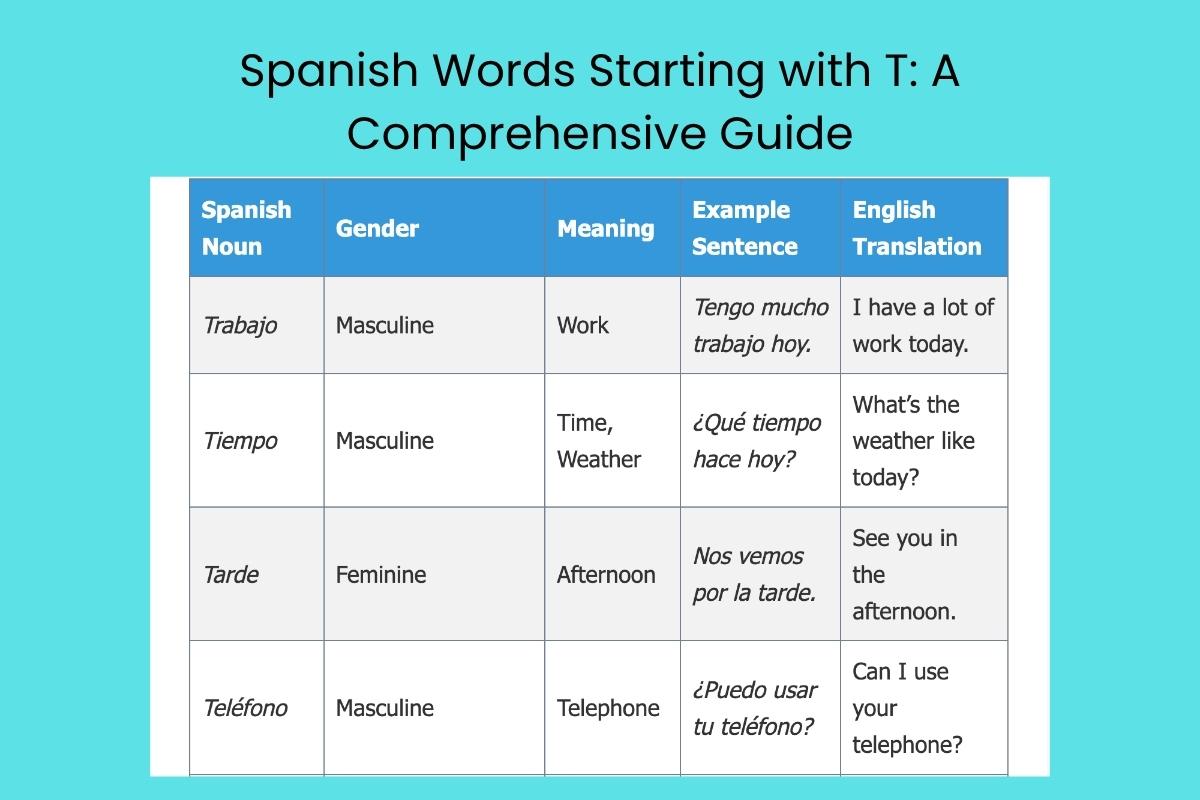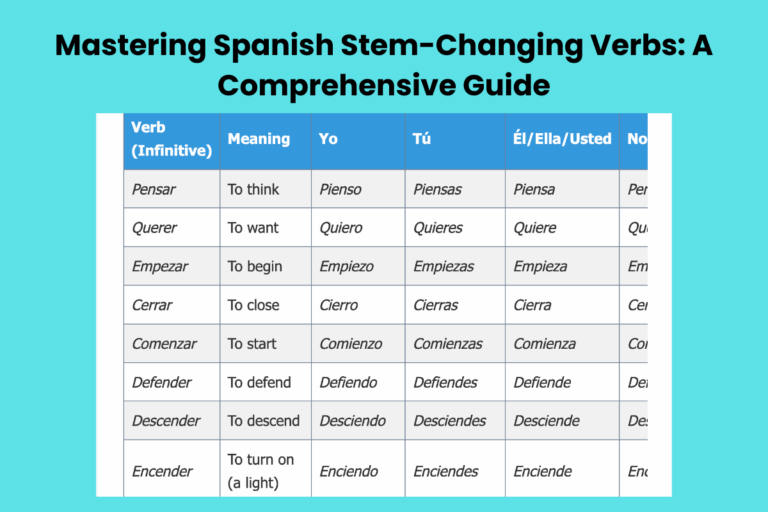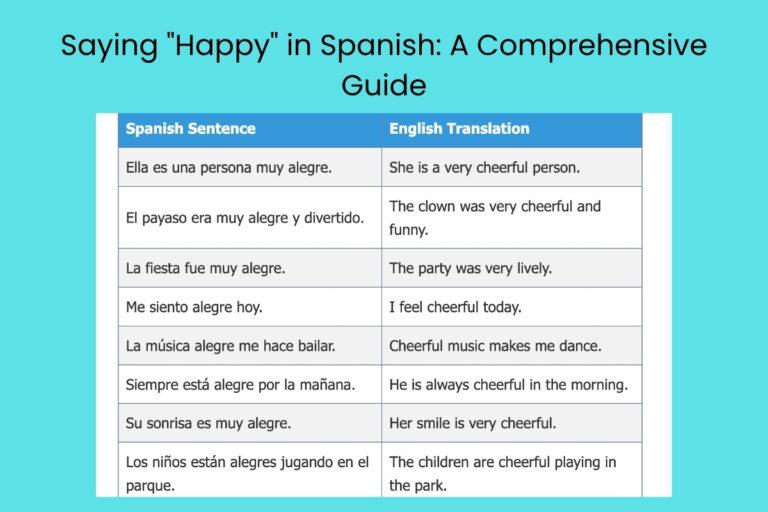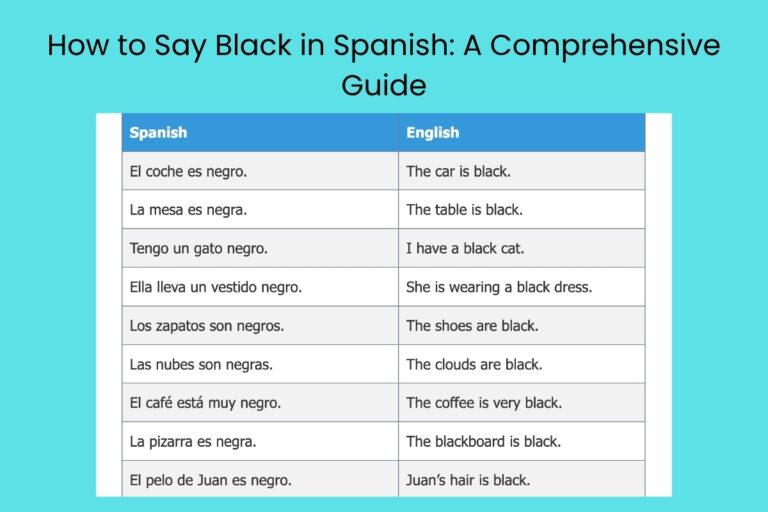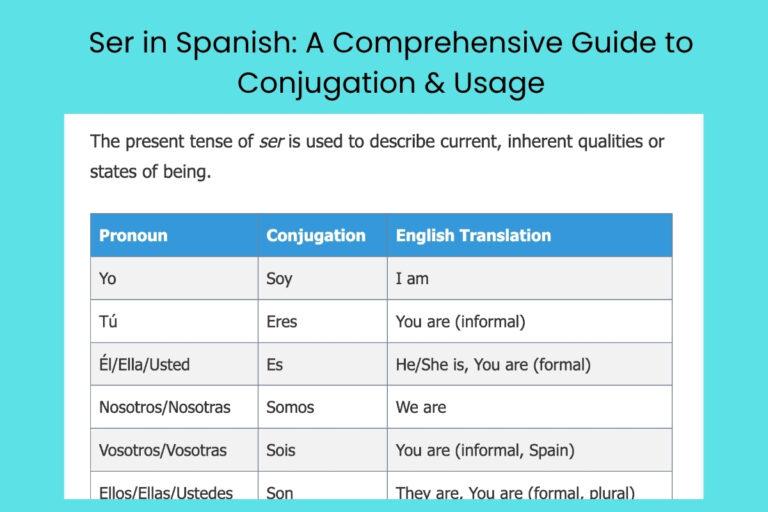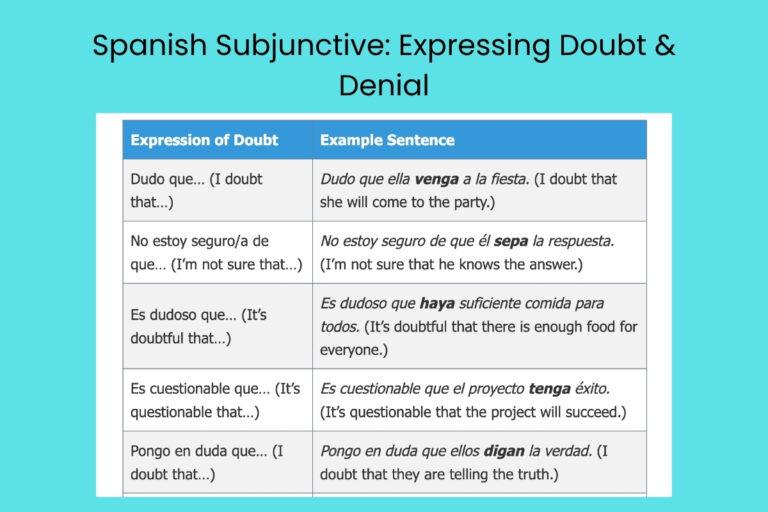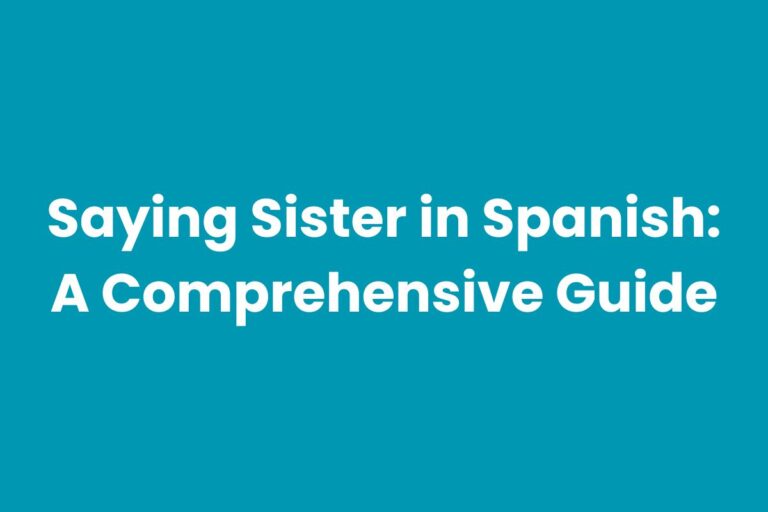Spanish Words Starting with T: A Comprehensive Guide
Understanding vocabulary is crucial for mastering any language, and Spanish is no exception. This article focuses on Spanish words that begin with the letter “T,” providing you with a comprehensive guide to expand your vocabulary and improve your comprehension.
Whether you’re a beginner just starting your Spanish journey or an intermediate learner looking to refine your skills, this guide will offer valuable insights into the diverse range of “T” words in Spanish, their meanings, and their usage in various contexts. By exploring these words, you’ll enhance your ability to communicate effectively and understand the nuances of the Spanish language.
From common nouns and verbs to more complex terms, this resource will help you build a solid foundation for fluent Spanish communication.
Table of Contents
- Introduction
- Definition: Spanish Words Starting with T
- Structural Breakdown of Spanish Words
- Types and Categories of Spanish Words Starting with T
- Examples of Spanish Words Starting with T
- Usage Rules for Spanish Words Starting with T
- Common Mistakes with Spanish Words Starting with T
- Practice Exercises
- Advanced Topics: Nuances and Idioms
- FAQ: Frequently Asked Questions
- Conclusion
Definition: Spanish Words Starting with T
Spanish words starting with the letter “T” encompass a wide range of vocabulary, fulfilling various grammatical roles such as nouns, verbs, adjectives, and adverbs. These words, like all vocabulary in Spanish, are essential for constructing sentences, expressing ideas, and understanding the language in its written and spoken forms.
Understanding the meaning and correct usage of these “T” words is vital for effective communication. They are used in everyday conversations, formal writing, and specialized contexts, contributing to the richness and versatility of the Spanish language.
The ‘T’ sound in Spanish is generally pronounced similarly to English, with slight variations depending on the regional accent.
The grammatical function of a Spanish word that begins with “T” depends on its specific category. For example, a noun (sustantivo) will typically refer to a person, place, thing, or idea, while a verb (verbo) will describe an action or state of being. Adjectives (adjetivos) modify nouns, and adverbs (adverbios) modify verbs, adjectives, or other adverbs. Each category plays a distinct role in sentence structure and meaning. Recognizing these roles is key to using these words correctly.
Structural Breakdown of Spanish Words
Spanish words, including those starting with “T,” follow a consistent structural pattern. They are composed of a root, which carries the core meaning, and affixes (prefixes and suffixes), which modify or enhance that meaning.
Understanding this structure helps in deciphering unfamiliar words and expanding vocabulary more efficiently. Many Spanish words also have Latin roots, which can aid English speakers in recognizing and understanding their meanings.
For instance, consider the word “trabajo” (work). The root is related to the concept of labor or effort. By understanding common prefixes and suffixes, one can often infer the meaning of related words. For example, adding the suffix “-ador” to a verb often creates a noun referring to someone who performs the action of the verb, such as “trabajador” (worker). Similarly, prefixes like “trans-” can indicate a change or movement, as in “transformar” (to transform). Knowing these structural elements significantly aids in vocabulary acquisition and comprehension.
Types and Categories of Spanish Words Starting with T
Nouns
Nouns (sustantivos) are words that represent people, places, things, or ideas. Spanish nouns have gender (masculine or feminine) and number (singular or plural). The gender of a noun often, but not always, determines the article (el or la) that precedes it. For example, “el teléfono” (the telephone) is masculine, while “la televisión” (the television) is feminine. Nouns starting with “T” are diverse and cover a wide range of concepts.
Verbs
Verbs (verbos) express actions, occurrences, or states of being. Spanish verbs are conjugated to indicate tense, mood, and person. Verbs starting with “T” are essential for describing actions and processes. They also follow regular and irregular conjugation patterns, which must be learned for correct usage. Common verb endings include -ar, -er, and -ir, each with its own set of conjugation rules.
Adjectives
Adjectives (adjetivos) describe or modify nouns. In Spanish, adjectives usually follow the noun they modify and must agree with the noun in gender and number. For example, “un coche tranquilo” (a quiet car) shows that “tranquilo” must agree with the masculine singular noun “coche.” Adjectives starting with “T” add descriptive detail to nouns, enriching the language.
Adverbs
Adverbs (adverbios) modify verbs, adjectives, or other adverbs, providing information about how, when, where, or to what extent an action is performed. Many Spanish adverbs are formed by adding the suffix “-mente” to the feminine singular form of an adjective, such as “rápidamente” (quickly) from “rápida.” Adverbs starting with “T” contribute to the precision and detail of descriptions and narratives.
Examples of Spanish Words Starting with T
Nouns Examples
Here are some examples of Spanish nouns that start with the letter “T,” along with their meanings and examples of how they are used in sentences. The gender of each noun is indicated to help you use the correct articles.
Understanding the gender is critical for grammatical accuracy.
| Spanish Noun | Gender | Meaning | Example Sentence | English Translation |
|---|---|---|---|---|
| Trabajo | Masculine | Work | Tengo mucho trabajo hoy. | I have a lot of work today. |
| Tiempo | Masculine | Time, Weather | ¿Qué tiempo hace hoy? | What’s the weather like today? |
| Tarde | Feminine | Afternoon | Nos vemos por la tarde. | See you in the afternoon. |
| Teléfono | Masculine | Telephone | ¿Puedo usar tu teléfono? | Can I use your telephone? |
| Televisión | Feminine | Television | Me gusta ver la televisión. | I like to watch television. |
| Taza | Feminine | Cup | Quiero una taza de café. | I want a cup of coffee. |
| Tren | Masculine | Train | El tren llega a las seis. | The train arrives at six. |
| Turista | Masculine/Feminine | Tourist | Ella es una turista de Canadá. | She is a tourist from Canada. |
| Tema | Masculine | Topic, Theme | El tema de hoy es importante. | Today’s topic is important. |
| Texto | Masculine | Text | Necesito corregir este texto. | I need to correct this text. |
| Tierra | Feminine | Earth, Land | La Tierra es nuestro hogar. | The Earth is our home. |
| Tío | Masculine | Uncle | Mi tío vive en España. | My uncle lives in Spain. |
| Tía | Feminine | Aunt | Mi tía es muy amable. | My aunt is very kind. |
| Traje | Masculine | Suit | Necesito un traje nuevo. | I need a new suit. |
| Tarjeta | Feminine | Card | ¿Tienes una tarjeta de crédito? | Do you have a credit card? |
| Tijeras | Feminine (plural) | Scissors | ¿Dónde están las tijeras? | Where are the scissors? |
| Tinta | Feminine | Ink | Necesito tinta para la impresora. | I need ink for the printer. |
| Tomate | Masculine | Tomato | Quiero un tomate en mi ensalada. | I want a tomato in my salad. |
| Torre | Feminine | Tower | La torre es muy alta. | The tower is very tall. |
| Tortuga | Feminine | Turtle | La tortuga es muy lenta. | The turtle is very slow. |
| Traducción | Feminine | Translation | Necesito una traducción de este documento. | I need a translation of this document. |
| Trampa | Feminine | Trap | Ten cuidado, es una trampa. | Be careful, it’s a trap. |
| Truco | Masculine | Trick | Conozco un truco de magia. | I know a magic trick. |
| Tumba | Feminine | Tomb | Visitamos la tumba del rey. | We visited the king’s tomb. |
| Turno | Masculine | Turn, Shift | Es mi turno de hablar. | It’s my turn to speak. |
Verbs Examples
Here are examples of Spanish verbs starting with the letter “T,” along with their meanings and example sentences. Note that the verbs are presented in their infinitive form.
Remember to conjugate the verb correctly based on the subject and tense of the sentence.
| Spanish Verb (Infinitive) | Meaning | Example Sentence | English Translation |
|---|---|---|---|
| Tener | To have | Yo tengo un coche nuevo. | I have a new car. |
| Tomar | To take, to drink | Voy a tomar un café. | I am going to drink a coffee. |
| Trabajar | To work | Ella trabaja en una oficina. | She works in an office. |
| Traer | To bring | ¿Puedes traer el libro? | Can you bring the book? |
| Traducir | To translate | Necesito traducir este documento. | I need to translate this document. |
| Tocar | To touch, to play (an instrument) | No toques eso. | Don’t touch that. |
| Torcer | To twist | Ten cuidado de no torcerte el tobillo. | Be careful not to twist your ankle. |
| Toser | To cough | Él está tosiendo mucho. | He is coughing a lot. |
| Transformar | To transform | La oruga se transformó en mariposa. | The caterpillar transformed into a butterfly. |
| Tratar | To treat, to try | Debes tratarlo con respeto. | You should treat him with respect. |
| Tardar | To take time, to delay | No tardes mucho en llegar. | Don’t take too long to arrive. |
| Terminar | To finish | Vamos a terminar este proyecto hoy. | We are going to finish this project today. |
| Tirar | To throw | No tires basura en la calle. | Don’t throw trash on the street. |
| Titubear | To hesitate | Ella titubeó antes de responder. | She hesitated before answering. |
| Tolerar | To tolerate | No puedo tolerar esa actitud. | I cannot tolerate that attitude. |
| Tornar | To return, to turn | Se tornó hacia mí y sonrió. | He turned towards me and smiled. |
| Transportar | To transport | El camión transporta mercancías. | The truck transports goods. |
| Trasladar | To move, to transfer | Nos vamos a trasladar a otra ciudad. | We are going to move to another city. |
| Trascender | To transcend | Su arte logró trascender fronteras. | His art managed to transcend borders. |
| Tribular | To trouble, to distress | No quiero tribularte con mis problemas. | I don’t want to trouble you with my problems. |
| Triplicar | To triple | Vamos a triplicar nuestras ventas este año. | We are going to triple our sales this year. |
| Tropezar | To stumble | Tuve cuidado de no tropezar con la alfombra. | I was careful not to stumble on the carpet. |
| Truncar | To truncate, to cut short | La tormenta truncó nuestras vacaciones. | The storm cut short our vacation. |
| Tutelar | To protect, to tutor | El profesor va a tutelar a los estudiantes. | The professor is going to tutor the students. |
Adjectives Examples
Here are examples of Spanish adjectives starting with the letter “T,” along with their meanings and example sentences. Remember that adjectives must agree in gender and number with the noun they modify.
| Spanish Adjective | Meaning | Example Sentence | English Translation |
|---|---|---|---|
| Tranquilo | Calm, Quiet | El pueblo es muy tranquilo. | The town is very quiet. |
| Triste | Sad | Ella está muy triste hoy. | She is very sad today. |
| Típico | Typical | Es un plato típico de España. | It’s a typical Spanish dish. |
| Terrible | Terrible | Fue una experiencia terrible. | It was a terrible experience. |
| Tierno | Tender | Este bistec es muy tierno. | This steak is very tender. |
| Torpe | Clumsy | Soy un poco torpe a veces. | I am a bit clumsy sometimes. |
| Total | Total | El costo total es cien euros. | The total cost is one hundred euros. |
| Trabajador | Hardworking | Él es un empleado trabajador. | He is a hardworking employee. |
| Transparente | Transparent | El vaso es transparente. | The glass is transparent. |
| Tremendo | Tremendous | Fue un éxito tremendo. | It was a tremendous success. |
| Tenso | Tense | La situación es muy tensa. | The situation is very tense. |
| Testarudo | Stubborn | Él es muy testarudo. | He is very stubborn. |
| Timido | Shy | Ella es muy tímida. | She is very shy. |
| Tolerante | Tolerant | Es una persona tolerante. | He/She is a tolerant person. |
| Tonto | Silly, Foolish | No seas tonto. | Don’t be silly. |
Adverbs Examples
Here are examples of Spanish adverbs starting with the letter “T,” along with their meanings and example sentences. Many of these adverbs are formed by adding “-mente” to an adjective.
| Spanish Adverb | Meaning | Example Sentence | English Translation |
|---|---|---|---|
| También | Also, Too | Yo también quiero ir. | I also want to go. |
| Tampoco | Neither, Not either | Yo tampoco quiero ir. | I don’t want to go either. |
| Tan | So | Es tan hermoso. | It is so beautiful. |
| Tanto | So much, So many | No tengo tanto tiempo. | I don’t have so much time. |
| Tardé | Late | Llegué tarde a la reunión. | I arrived late to the meeting. |
| Totalmente | Totally | Estoy totalmente de acuerdo. | I totally agree. |
| Temporalmente | Temporarily | Estoy viviendo aquí temporalmente. | I am living here temporarily. |
Usage Rules for Spanish Words Starting with T
The usage of Spanish words starting with “T” follows the general rules of Spanish grammar. Nouns must agree with their articles and any modifying adjectives in gender and number.
Verbs must be correctly conjugated to match the subject and tense. Adjectives must agree with the nouns they modify.
Adverbs typically remain invariable, regardless of the nouns or verbs they modify.
One common area of confusion is the correct use of “tiempo” (time, weather) and “vez” (time as an instance). “Tiempo” refers to duration or the general state of the weather, while “vez” refers to a specific occasion or instance. For example: “No tengo tiempo” (I don’t have time) versus “Una vez fui a España” (Once I went to Spain). Another point to note is the use of ‘tan’ and ‘tanto’. ‘Tan’ is used before adjectives and adverbs, whereas ‘tanto’ is used before nouns.
Common Mistakes with Spanish Words Starting with T
Learners often make mistakes with Spanish words starting with “T” due to interference from English or a misunderstanding of Spanish grammar rules. Here are some common errors and their corrections:
| Incorrect | Correct | Explanation |
|---|---|---|
| Yo tengo calor. | Yo tengo calor. | Correct. This is the correct way to say “I am hot”. It’s an idiom, so it’s an exception. |
| El tiempo es bueno hoy. | Hace buen tiempo hoy. | While “El tiempo es bueno hoy” is understandable, the more natural way to express “The weather is good today” is to use the verb “hacer”. |
| Estoy triste. | Estoy triste. | Correct. “Estoy triste” is the correct way to say “I am sad.” The verb ‘estar’ is used to describe temporary states or feelings. |
| Yo tomar un café. | Yo tomo un café. | Incorrect verb conjugation. “Tomar” needs to be conjugated to match the subject “yo.” |
Practice Exercises
Test your knowledge of Spanish words starting with “T” with these exercises. Fill in the blanks with the correct word or conjugate the verb as required.
| Question | Answer |
|---|---|
| 1. Necesito usar el ________ para llamar a mi madre. | teléfono |
| 2. ¿Qué ________ hace hoy? | tiempo |
| 3. Ella ________ (trabajar) en un banco. | trabaja |
| 4. Voy a ________ (tomar) un taxi al aeropuerto. | tomar |
| 5. El libro es muy ________ (tierno). | tierno |
| 6. No tengo ________ (tanto) dinero como tú. | tanto |
| 7. Él llegó ________ (tarde) a la fiesta. | tarde |
| 8. Quiero una ________ de café. | taza |
| 9. El ________ sale a las ocho. | tren |
| 10. Necesito ________ (traducir) este documento. | traducir |
| 11. Ella siempre está ________ (triste) cuando llueve. | triste |
| 12. Este es un plato ________ (típico) de la región. | típico |
| 13. El costo ________ (total) es de 50 euros. | total |
| 14. El es muy ________ (trabajador) | trabajador |
| 15. El vaso es ________ (transparente). | transparente |
Advanced Topics: Nuances and Idioms
Advanced learners can delve into the nuances and idiomatic expressions involving Spanish words starting with “T.” Many common expressions use these words in ways that are not immediately obvious from their literal meanings. For example, “tener ganas de” means “to feel like” or “to want to,” as in “Tengo ganas de ir al cine” (I feel like going to the movies). Understanding these idiomatic expressions enriches comprehension and allows for more natural and fluent communication.
Another advanced topic is the use of “Tú” vs. “Usted.” “Tú” is the informal “you,” used with friends, family, and people you know well.
“Usted” is the formal “you,” used to show respect to elders, superiors, or people you don’t know. Choosing the right pronoun is crucial for maintaining appropriate social etiquette in Spanish-speaking cultures.
The choice between “Tú” and “Usted” also affects verb conjugations, making it an important aspect of advanced grammar.
FAQ: Frequently Asked Questions
- What is the difference between “tiempo” and “vez”?
“Tiempo” refers to duration or weather, while “vez” refers to an instance or occasion. For example, “No tengo tiempo” (I don’t have time) versus “Una vez fui a España” (Once I went to Spain).
- How do I know the gender of a Spanish noun?
Generally, nouns ending in “-o” are masculine, and those ending in “-a” are feminine, but there are exceptions. It’s best to learn the gender of each noun along with the word itself. Dictionaries always indicate the gender of nouns.
- How do I form adverbs from adjectives in Spanish?
Most Spanish adverbs are formed by adding the suffix “-mente” to the feminine singular form of the adjective. For example, “rápido” (fast) becomes “rápidamente” (quickly).
- What are some common idiomatic expressions with the verb “tener”?
Common expressions include “tener hambre” (to be hungry), “tener sed” (to be thirsty), “tener sueño” (to be sleepy), and “tener razón” (to be right).
- When should I use “Tú” versus “Usted”?
Use “Tú” with friends, family, and people you know well. Use “Usted” to show respect to elders, superiors, or people you don’t know.
- Are there any irregular verbs starting with “T” that I should be aware of?
Yes, “tener” (to have) and “traer” (to bring) are irregular verbs. Their conjugations do not follow regular patterns, so it’s important to memorize them.
- How can I improve my pronunciation of Spanish words starting with “T”?
Listen to native speakers and practice mimicking their pronunciation. Pay attention to the subtle differences in sounds and intonation. Language learning apps and online resources can be helpful.
- What is the best way to expand my vocabulary of Spanish words starting with “T”?
Read Spanish books, articles, and websites. Watch Spanish movies and TV shows. Use flashcards and vocabulary apps. Practice using new words in conversation whenever possible.
- What is the difference between “tan” and “tanto”?
“Tan” is used before adjectives and adverbs to mean “so” (e.g., “tan bueno” – so good). “Tanto” means “so much” or “so many” and is used before nouns (e.g., “tanto dinero” – so much money).
- How do I know when to use “ser” vs “estar” with adjectives starting with “T”?
Use “ser” for inherent or permanent characteristics (e.g., “Es tranquilo” – He/She is a calm person, implying it’s their nature). Use “estar” for temporary states or conditions (e.g., “Está triste” – He/She is sad, implying it’s a temporary feeling).
Conclusion
Mastering Spanish vocabulary, especially words starting with the letter “T,” is essential for fluency and effective communication. This guide has provided a comprehensive overview of various “T” words, including nouns, verbs, adjectives, and adverbs, along with their meanings, usage rules, and common mistakes to avoid.
By understanding the structural elements of Spanish words, recognizing their grammatical functions, and practicing their usage in context, you can significantly expand your vocabulary and improve your overall language proficiency.
Continue practicing with these words through reading, writing, and speaking. Pay attention to how native speakers use them in different contexts, and don’t be afraid to make mistakes – they are a natural part of the learning process.
Remember to review and reinforce your knowledge regularly to solidify your understanding and build confidence in your Spanish language skills. Consistent effort and dedication will lead you to greater fluency and mastery of the Spanish language.

